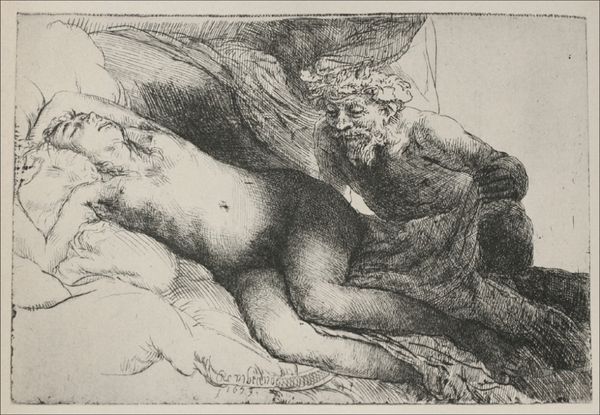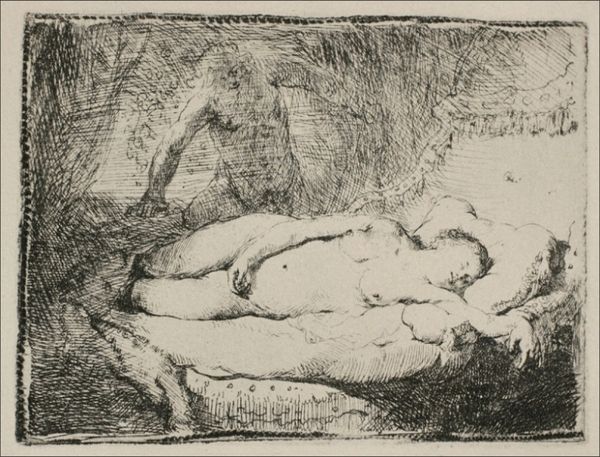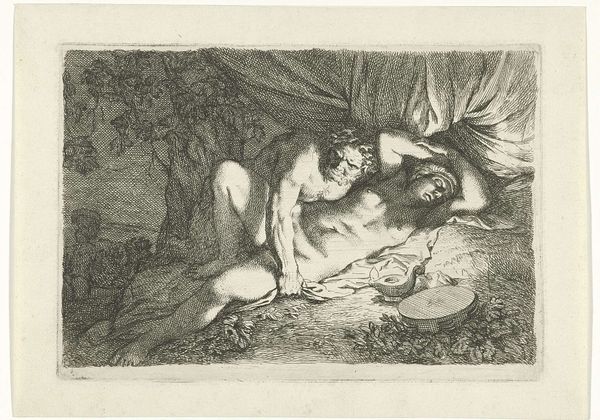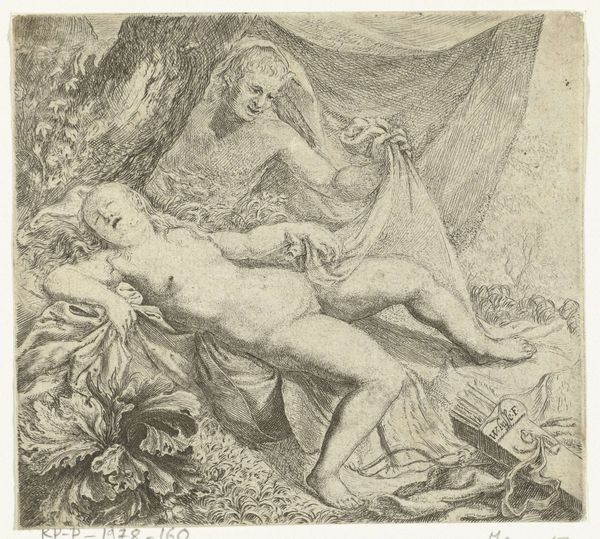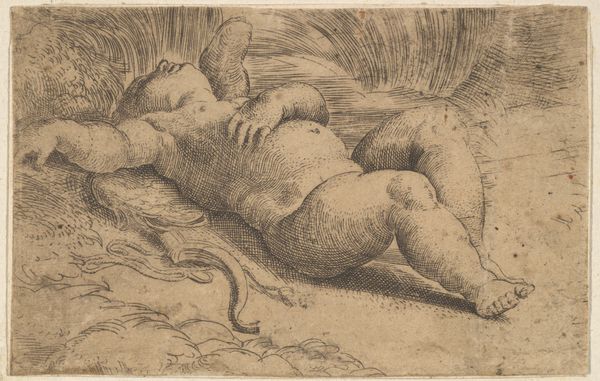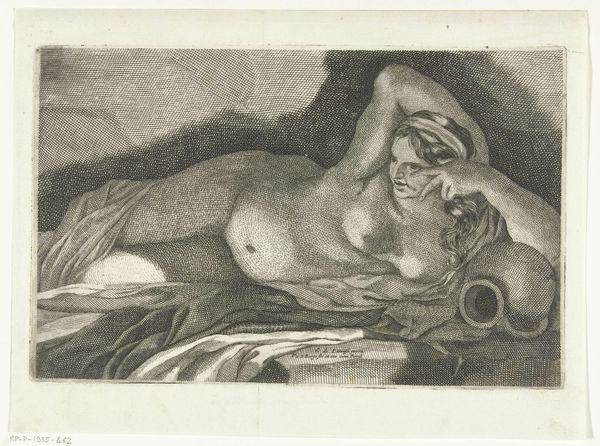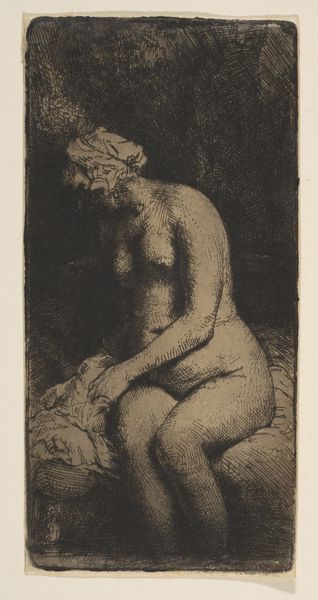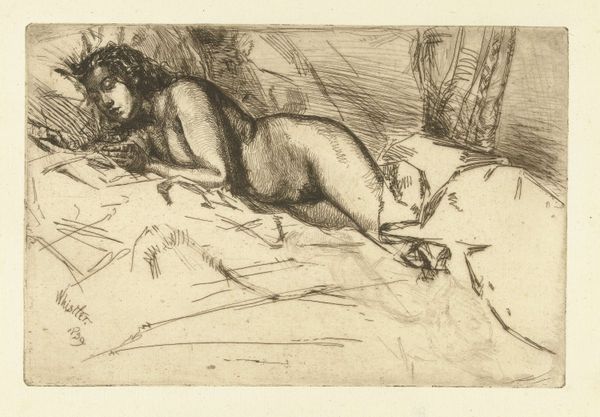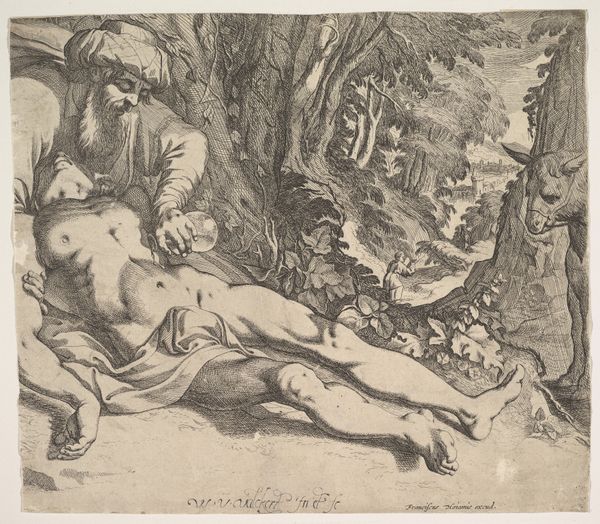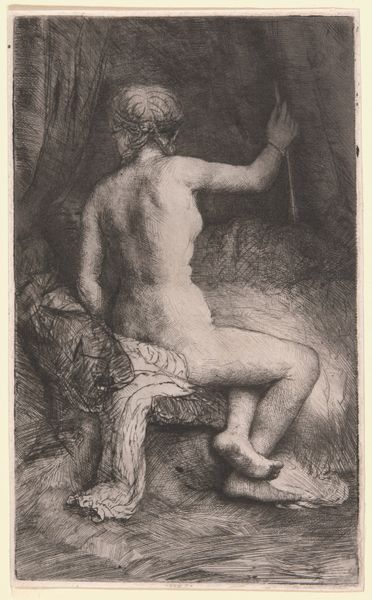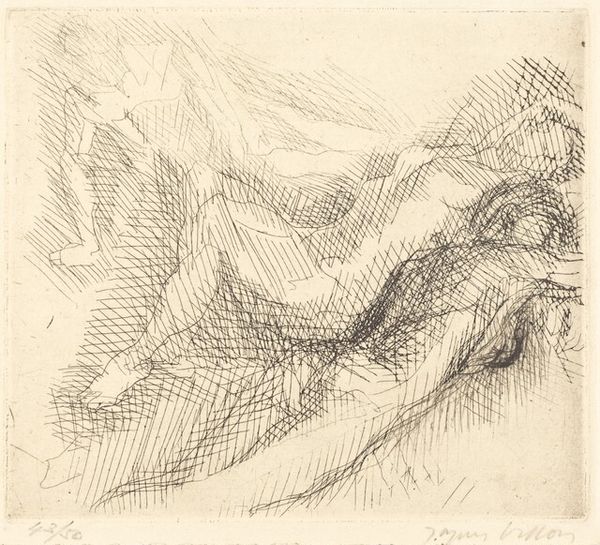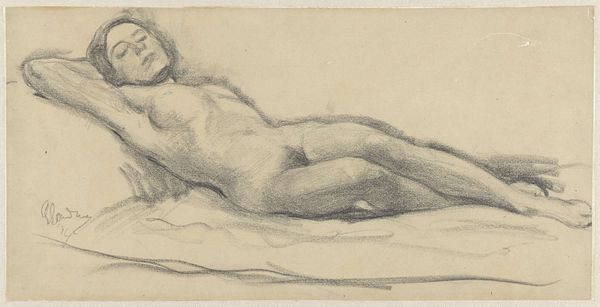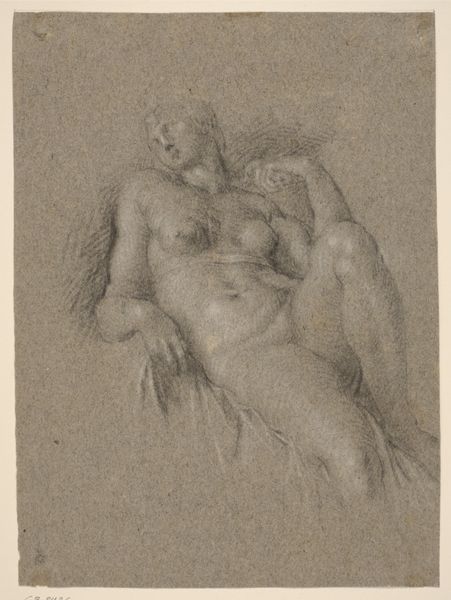
etching, intaglio, engraving
#
allegory
#
baroque
#
etching
#
intaglio
#
figuration
#
nude
#
engraving
Dimensions: height 140 mm, width 202 mm
Copyright: Rijks Museum: Open Domain
Curator: Let's explore this etching and engraving by Rembrandt van Rijn, created in 1659, titled "Jupiter and Antiope: the larger plate," currently housed at the Rijksmuseum. It's a potent depiction of a classical myth. Editor: Whew, that title’s a mouthful! My first thought: heavy, sleepy, almost…suffocating? All that velvety darkness crowding in, but there’s still a strange softness about the light on her body. Curator: Absolutely, the composition and subject matter hold significance when examining the narrative construction around the female form, and specifically its vulnerability. The myth tells of Jupiter's deception, disguising himself as a satyr to seduce Antiope. Editor: You know, that’s interesting you say that… He looks almost sorrowful, not seductive. Like he's regretting something even as he’s looking at her. Is that weird? Curator: Not at all. Considering contemporary critical theories on power dynamics, one could see Rembrandt offering a more complex rendering than a simple portrayal of dominance. The composition prompts questions about consent and the objectification of women within art history. Editor: It makes me think of current conversations on reclaiming agency and stories. I keep wondering, what was she dreaming about just then? Was it a nice dream before all *this* happened? Curator: Considering Rembrandt's historical context, this piece becomes particularly intriguing when considered alongside the socio-political and ethical dimensions of art depicting nudes and classical subjects. His portrayal sparks dialogue around the legacy of these themes and how they shape perceptions today. Editor: True. It does force you to really look, doesn’t it? To not just skim the surface but to kind of wrestle with what it all means… or *could* mean. Curator: Indeed. Engaging with this piece calls for an active consideration of the embedded ideologies. I appreciate the etching as a platform for critical discourse and intersectional analysis. Editor: And I like the dreamy textures…it feels unresolved, almost… Like the story isn't over. And that, maybe, is what sticks with you long after you look away.
Comments
No comments
Be the first to comment and join the conversation on the ultimate creative platform.
